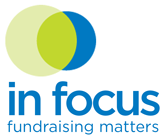Recent Posts
- The Secret Sauce: Strategies & Tactics to Engage Institutional Funders
- What Are Your Donors Saying When They Go Quiet? And How Should You Respond?
- Maximizing Year-End Giving: Strategies for a Successful Fundraising Campaign
- Navigating 2024’s Unique Year-End Fundraising Landscape
- Latest Giving USA Data
- How to Flex Your Case for Support to Raise More Money
- Maximizing Potential of Donor-Advised Funds: Strategies You Need To Know
- Major Donors: Cultivating Relationships & Forging Strong Ties
Are You Ignoring Your Mid-Level Donor?
July 17, 2018
Recently, my colleague Joan Wood and I worked with a client's mid-level donor program. Our focus was to assess the program and provide strategies on how to grow this vital, but often overlooked, group.
With a robust membership of over 50,000, this nonprofit had many individuals supporting its mission at lower levels. But when it came to converting their members to donors, they knew they could be doing more.
While their mid-level program had grown over the years, the pace was steady but slow. Representing just over 1% of their membership when we began our work, their mid-level donors were languishing in "mid-land."
The development staff was doing a lot of things right in trying to connect and convert members to mid-level donors, but there were areas we found that could be improved. Here's a snapshot of what we recommended to expand this vital group of supporters:
- Use data as a guide. If you have wealth screening data, use it! Our client had a wealth of information about their donors but hadn't been including screen results as they considered who to reach out and cultivate for a bigger gift. Even if you don't have a wealth screen, you can use your data to determine who should get extra attention. A good dashboard report that tells you key points to keep an eye on is also important (retention rate, year over year revenue comparisons, average gift and upgrade/downgrade patterns are especially good). Last, initiate an annual mid-level donor survey to get feedback on your donor's programmatic interests, experiences with your organization, and communication preferences (especially how they want to be contacted!). And make sure you know how to see this information in your database.
- Adopt a Donor-Centered Growth Model. We all agree that donors are not created equal. Some mid-level donors can give much more, while others are maxed out with their gift. As we dug into their data and outreach strategies, it was clear that the mid-level team wasn't distinguishing between donors that had deep capacity – and should be cultivated for a possible major gift ask down the line – and those that didn't. Working with the team we created sub-lists of "rising mid-level donors" and "donors with potential" and created different strategies for each.
- Focus on identity and branding. Does décor matter when the substance is solid? Some may disagree, but I say yes! Your mission may be critical and your services often praised but when you reach out to donors and invite them to be a part of an exclusive group, you need to make sure you are offering a unique experience. Create a giving club for your mid-level donors with a brand that's consistent with your organization's look and feel. Carry that identity through in all your communication – letters, emails, newsletter, social – so your donors know they're appreciated and are part of an important group.
Always remember that a strong mid-level program often indicates a stronger major donor program. Cultivate wisely and spend time getting to know these donors who have often upgraded from "entry-level-dip-a-toe" gifts and are starting to build a real relationship with your organization.
If you spend time identifying who is in this group and engage them once they've given, you'll likely find some people who may be ready to invest even more.
Want to learn more? Drop a line and let me know about your mid-level program!

